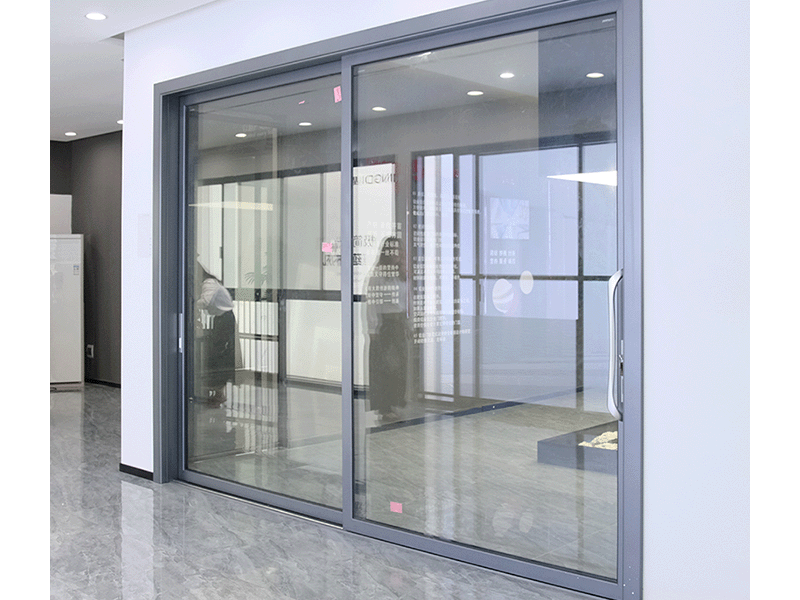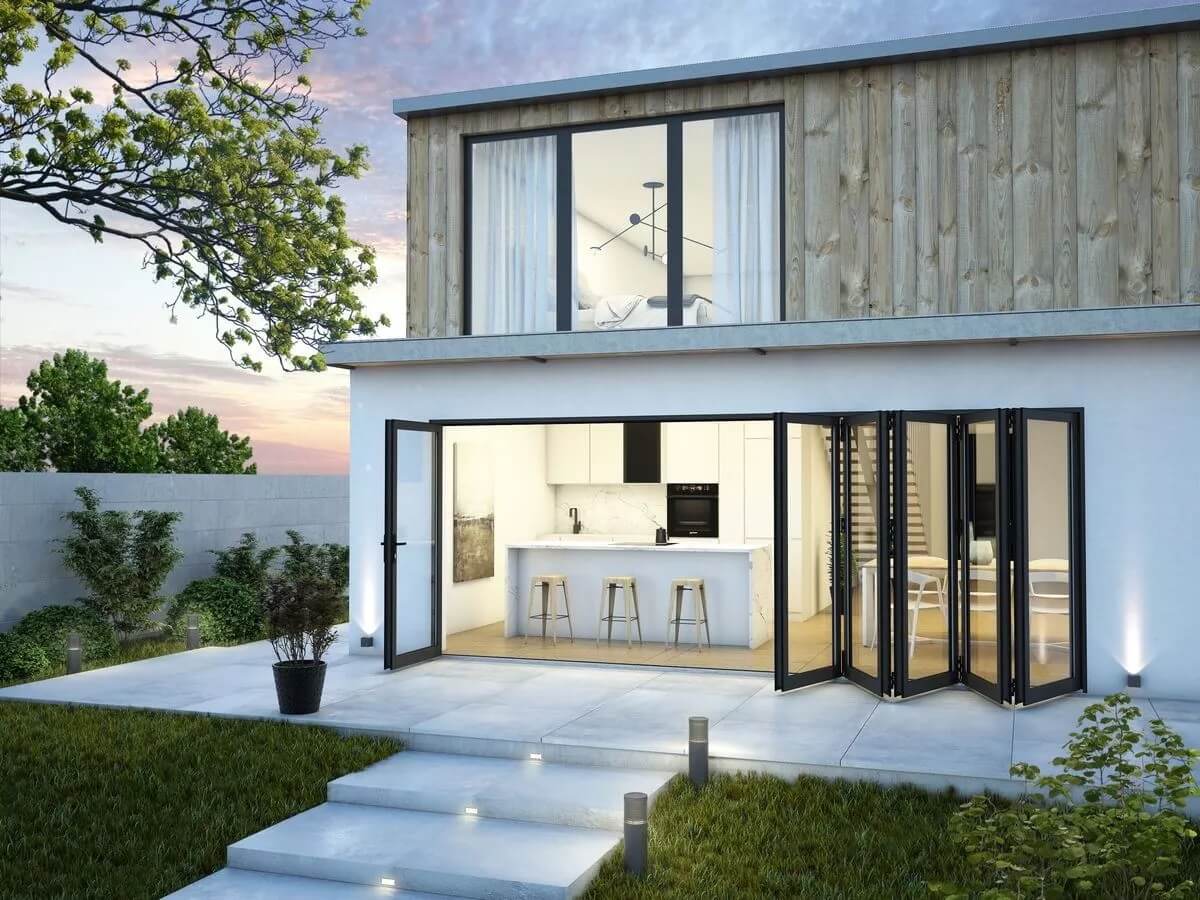When modernizing a home or designing a commercial space, interior doors do more than just separate rooms—they shape light flow, sound control, aesthetics, and the feel of movement. Among the many materials available, aluminum interior doors stand out as a compelling choice. They combine light weight, durability, slim profiles, and modern appeal.
In this article, we'll walk you through the 6 types of aluminum interior doors, what advantages they bring in different scenarios, and how a manufacturer like Jingyu can help deliver tailored solutions.
Why Aluminum Interior Doors?
Aluminum interior doors are becoming more common in both upscale residential and commercial settings. Before diving into types, it helps to understand why one would choose aluminum over wood, fiberglass, or vinyl for an interior door.
Slim profile & elegance: Aluminum frames can be made much thinner than many wooden doors, allowing larger glass panels without sacrificing strength.
Corrosion resistance & stability: Aluminum doesn't warp or swell with moisture or humidity, which is especially valuable in bathrooms, kitchens, or humid climates.
Durability & low maintenance: With proper coatings (powder coating, anodizing), aluminum is resistant to scratches and aging.
Recyclability & environmental friendliness: Aluminum is highly recyclable, aligning with green building trends.
Weight advantage: It's relatively light, reducing load on hinges and supporting structures.
Customization and flexibility: Aluminum profiles can be extruded and cut to many shapes, with integrated thermal breaks, glazing pockets, or decorative treatments.
Top 6 Types of Aluminum Interior Doors
Below is a breakdown of the principal door types you'll see in homes and buildings, with notes on where each excels (and potential drawbacks).
1. Swing (Hinged) Aluminum Doors
These are your traditional pivoting doors on one or two hinges, swinging either inward or outward. The aluminum frame supports either a solid panel or a glazed (glass) infill.
Where are they used?
● Bedrooms, study rooms, or any standard interior space.
● Offices, conference rooms in commercial buildings.
● Entry into rooms where clearance is available.
Pros & Considerations
● Full seal and acoustic control: When closed, they can seal more tightly, aiding sound insulation.
● Style flexibility: You can use clear glass, frosted glass, or solid cores.
● Space requirement: They consume swing clearance, so in tight corridors or small rooms, swing doors can be limiting.
2. Sliding Aluminum Doors
These doors slide laterally on tracks instead of swinging. The frame is supported at the top, bottom, or both. The panels can be full-glass with slim aluminum edges, or more opaque.
Where are they used?
● As room dividers in open floor plans (e.g., between living and dining rooms).
● Closet or wardrobe doors in bedroom suites.
● Kitchen pantry or laundry area access, where swing space may be limited.
Pros & Considerations
● Space-saving: No swing area needed.
● Light and transparency: Sliding aluminum doors with glass bring light deep into interior spaces.
● Maintenance: Track and roller maintenance is important to avoid jamming.
● Seal quality: They can't seal as tightly as hinged doors (less ideal for high acoustic separation).
3. Folding (Bifold / Accordion) Aluminum Doors
These doors have multiple panels that fold back onto each other, either to one side (single-direction fold) or both sides (bi-fold). Aluminum profiles support glass or solid infills. Folding doors often incorporate a track both at the ceiling and floor.
Where are they used?
● As partitions between indoor-outdoor spaces (e.g., a living room to patio).
● Between the dining and kitchen in modern homes.
● In offices or conference halls, to split large rooms flexibly.
Pros & Considerations
● Wide opening: They allow large, unobstructed openings.
● Design flexibility: You can have narrow mullions and large glass spans.
● Complexity & cost: More hardware, more potential for misalignment.
● Thermal & acoustic breaks: Good models include thermal break sections and seals to reduce leakage.
4. Pivot Aluminum Doors
Pivot doors rotate on a central pivot axis, either at floor/ceiling hardware or offset. Unlike swing doors that hinge at one edge, pivot doors allow rotation around a vertical axis located near the door's center or offset.
Where are they used?
● Signature entrances in homes or rooms as a design statement.
● Museum, gallery, or showroom spaces that want dramatic entry points.
Pros & Considerations
● Visual impact: Very striking; allows a door panel to appear floating.
● Balanced operation: Well-engineered pivot hardware can support heavy doors.
● Sealing & tightness: Achieving a tight seal on all edges is trickier than with swing doors.
● Floor finish complexity: The pivot point location may require special floor and ceiling preparation.
While pivot doors are more common on exterior usage, there are interior pivot doors made of aluminum in high-end designs (less common in standard residential settings).
5. Pocket Aluminum Doors
Pocket doors slide into a wall cavity (“pocket”) and disappear when fully opened. The aluminum frame and infill panel retract into that hidden space. Pocket-type aluminum interior doors are niche but gaining traction in modern minimalist interior design.
Where are they used?
● Tight corridors or bathrooms.
● Spaces where you don't want a visible door when open.
● Between small rooms where swing or sliding standard doors would be awkward.
Pros & Considerations
● Invisible when open: Maximum visual openness.
● Track design critical: The pocket cavity structure must be well designed (height, depth, header strength).
● Limited width: Pocket doors usually work best for narrower openings—very wide pocket doors are structurally more complex.
6. Fire-Rated / Fireproof Aluminum Doors (Interior)
These doors incorporate fire-resistant cores, intumescent seals, fire-rated glass (if glazed), and special silicone or gaskets to resist heat transfer. The aluminum frame must meet fire-code requirements.
Where are they used?
● Stairwell enclosures, corridors in apartment buildings, or commercial offices.
● Between utility rooms and occupied spaces.
● In hotels or institutional settings where fire compartmentalization is needed.
Pros & Considerations
● Safety compliance: Must meet fire-rating codes (e.g., 45, 60, or 90 minutes).
● Hefty construction: Greater thickness, more robust hardware, and seals.
● Limited design flexibility: Fire-rated designs have stricter standards on glazing size, mullion spacing, etc.
Custom Aluminum Interior Doors Manufacturer
Selecting the Right Aluminum Interior Door
When choosing among these door styles, consider these key factors:
Space constraints & swing clearance: Swing doors require clearance; sliding/folding doors are better where space is tight.
Acoustic and thermal performance: If sound insulation or thermal separation matters, go for doors with thermal breaks, gasketing, and laminated or insulated glass. (Many aluminum systems offer thermal break options.)
Lighting and transparency: Use glazed panels, full glass, or “lite” windows to allow natural light. Frosted, tinted, or patterned glass can balance privacy and brightness.
Aesthetic style: Aluminum can be powder-coated, anodized, or textured (e.g., wood wood-grain finish) to match interior decor.
Hardware and operational smoothness: Smooth rollers, precise tracks, concealed hinges — all contribute to a premium feel.
Budget & cost tradeoffs: Simpler swing doors are generally less expensive. Folding doors or fire-rated systems cost more due to extra hardware and engineering.
Manufacturer & supply chain control: Working with a vertically integrated manufacturer (that controls extrusion, coating, and assembly) helps manage cost, quality, and custom flexibility.
This is precisely the model Jingyu follows — integrating aluminum profile production, door/window lines, coating, and trading — giving more control over product quality and cost.
Use Cases & Application Examples
Let's look at some real-world application scenarios and observe how different aluminum door types shine:
Residential Living-Dining Partition: Many homeowners install sliding aluminum and glass doors or folding aluminum interior doors to separate or open up the living to dining. It balances openness and privacy.
Bathroom / Wet Zone: Use swing aluminum doors with moisture-resistant seals or pocket doors to optimize space. The aluminum frame resists rot in humid environments.
Closet / Wardrobe: Slim sliding aluminum doors or mirrored sliding aluminum closet doors are popular — they allow full-length mirrors and easy access without swing interference.
Office / Commercial Interiors: In conference rooms or collaboration spaces, pivot aluminum interior doors or glazed double swing aluminum doors lend prestige and transparency. Fire-rated aluminum doors are also crucial for corridor separation.
Indoor-Outdoor Transition: For patios, terraces, and balconies, aluminum folding or bi-fold doors give wide, unobstructed openings and strong structural resilience.
Luxury Residences: Custom frameless glass, aluminum pivot or flush doors with narrow mullions produce dramatic visuals in high-end settings.
How does Jingyu Support Aluminum Interior Door Projects?
Jingyu is a trustworthy manufacturer for those wanting custom aluminum interior doors (swing, sliding, folding, pivot, pocket, fire-rated).
Vertical integration: Jingyu runs aluminum profile extrusion, cutting, coating, and door/window assembly lines—so they maintain control over quality, cost, and consistency.
Product diversity: Jingyu catalog includes interior swing doors, sliding doors, folding doors (bi-fold), and thermal-break doors for both residential and commercial settings.
Customization & OEM/ODM support: Jingyu takes custom orders—meaning you can specify dimensions, glazing types, hardware, finishes (powder coating, anodized, wood-grain texture) to suit your design concept.
Quality & standards: We incorporate modern elements like thermal breaks, high-performance seals, and sound-dampening features into our doors, which is critical in many interior applications.
Conclusion
Whether you choose swing, sliding, folding, pivot, pocket, or fire-rated types depends on your space constraints, acoustic or thermal needs, and design vision. By intelligently combining frame and glass design, you can create interior divisions that are light, open, and elegant—or private, quiet, and secure.
For any serious interior aluminum door project, especially when you need custom sizes, integrated finishes, or inclusive hardware solutions, working with a vertically integrated manufacturer like Jingyu Aluminums provides significant advantages in quality control, cost management, and design freedom. Jingyu can turn your interior door vision into real, code-compliant, beautiful products.


